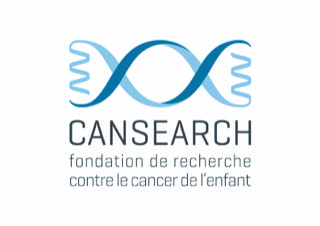b) Forum Study
ALL SCTped FORUM 2012 – Allogeneic Stem Cell Transplantation in Children and Adolescents with Acute Lymphoblastic Leukemia
The ALL SCTped FORUM 1.0 study is a multinational study conducted in children with acute lymphoblastic leukemia (ALL) who require hematopoietic stem cell transplantation (HSCT). The main goal of the study is to compare the therapeutic efficacy of a preparatory treatment for transplantation based on chemotherapy to one involving total body irradiation in children over 4 years old. These pre-transplant treatments are often intense and carry significant risks of both short- and long-term toxicity, which can lead to patient death. Effective management of drug exposure during treatment is crucial to limit both the risks of leukemia relapse after transplantation and the side effects of treatment.
Various methods, such as therapeutic monitoring, are available to control drug exposure during treatment. However, significant inter-individual variability in drug metabolism and susceptibility to toxicities makes optimal dosing of treatment for each patient challenging. Part of this inter-individual variability results from differences encoded in their genome. In the context of the FORUM study, our research platform investigates inter-individual variability among children in drug pharmacokinetics, i.e., differences in drug metabolism and elimination from the human body, as well as the contribution of genetic factors (pharmacogenetics) to these differences.
Our project aims, firstly, to develop and test mathematical models to predict each patient’s drug exposure based on their individual characteristics. Secondly, it involves studying the contribution of different genetic variants to the transformation, action, or elimination of drugs administered during conditioning.
Busulfan is one of the main chemotherapeutic compounds used in the study and commonly administered in preparation for hematopoietic stem cell transplants. Patients’ exposure to busulfan, i.e., the cumulative levels of this drug in the bloodstream, is correlated with transplant outcomes. Thus, inadequate exposure to busulfan can lead to graft rejection or disease relapse, while excessive exposure can cause potentially serious toxicities. The usual doses of busulfan administered to patients result in considerable and unpredictable exposure variabilities, necessitating dosage adjustments based on close pharmacokinetic therapeutic monitoring. The goal of this monitoring is to ensure that exposure is within a target therapeutic window that minimizes the risks of treatment inefficacy and toxicity. One of the objectives of our FORUM project is to define this therapeutic target in pediatric patients with ALL. Through mathematical models integrating clinical, pharmacokinetic, and genetic data collected in the FORUM study, we will propose exposure targets that optimize busulfan treatment for future patients.
Regarding the genetic aspect, we will first assess the impact of known genetic variants, i.e., those already reported in the literature or currently being published by our laboratory, such as the involvement of genetic variants of GST in patients receiving busulfan. Furthermore, we will attempt to identify new genetic markers contributing to interindividual variability in treatment responses using the results of our experimental research on cell lines cultured in the laboratory. We will test the potential of each candidate genetic variant to serve as a biomarker for pharmacokinetic variability and therapy outcomes.
We are currently consolidating and sequencing the genetic material collected during the study and building a database to organize all available clinical and genetic information. We have already added over 500 samples to our biobank and have obtained the complete genome of over 80% of study participants. The majority of the analyses described above should be completed during this year.
Additionally, we are actively involved in preparing the clinical protocol for the FORUM 2.0 study, which will follow this initial study next year to continue optimizing preparatory treatments for transplantation. We will use this new cohort to validate mathematical models in specific patient subgroups such as very young children and confirm the value of identified genetic predictors. Furthermore, we are currently establishing an infrastructure to evaluate real-time responses to graft-versus-host disease treatments, which will be tested in this new protocol.
